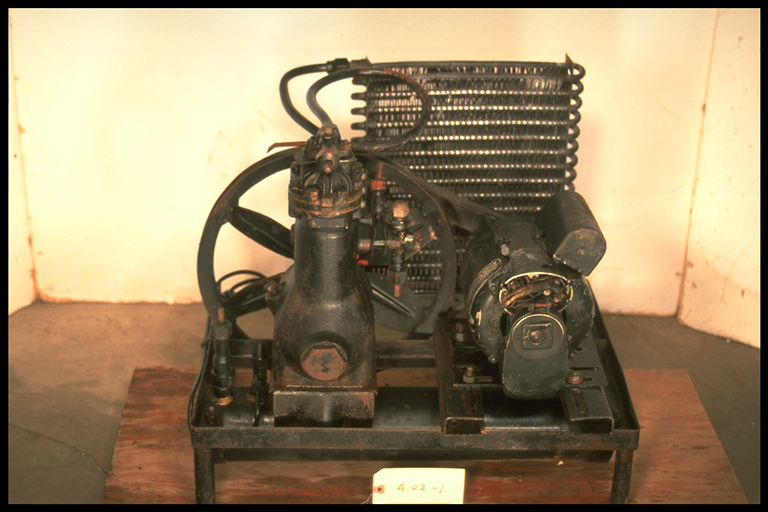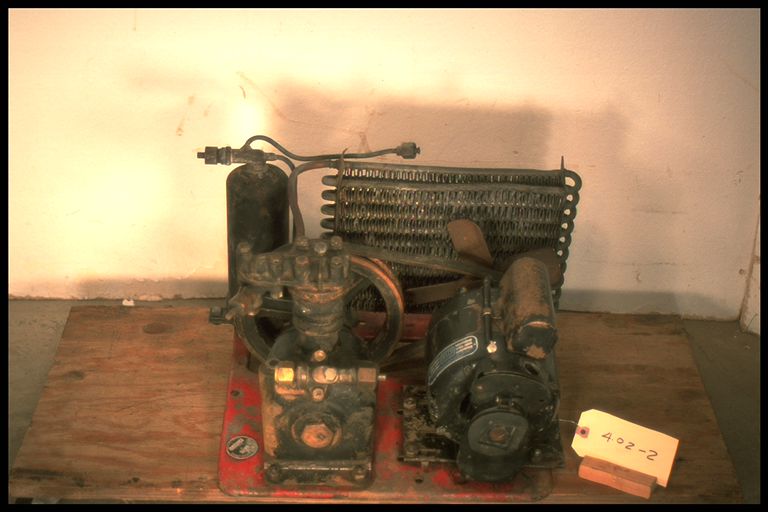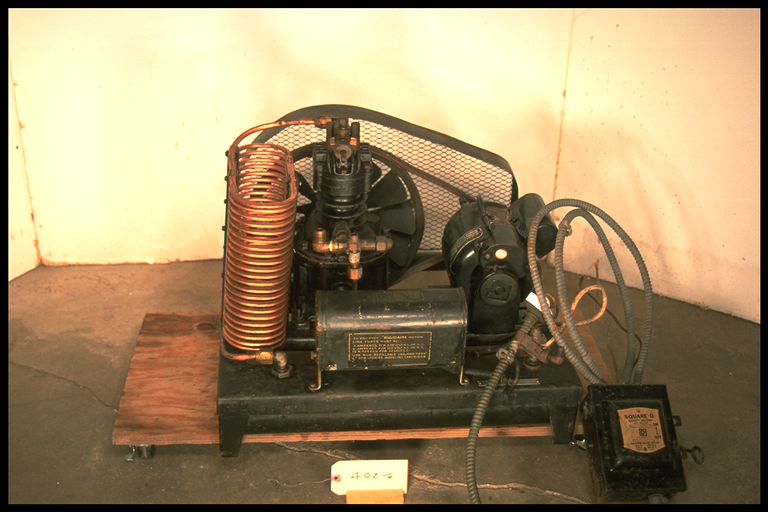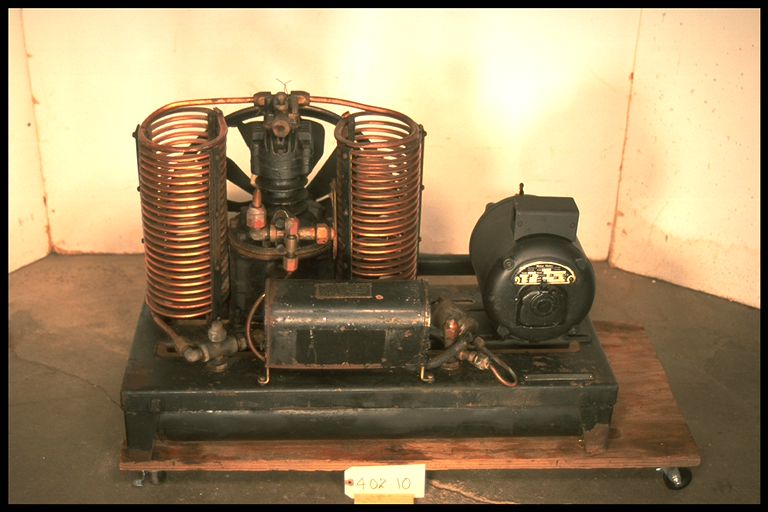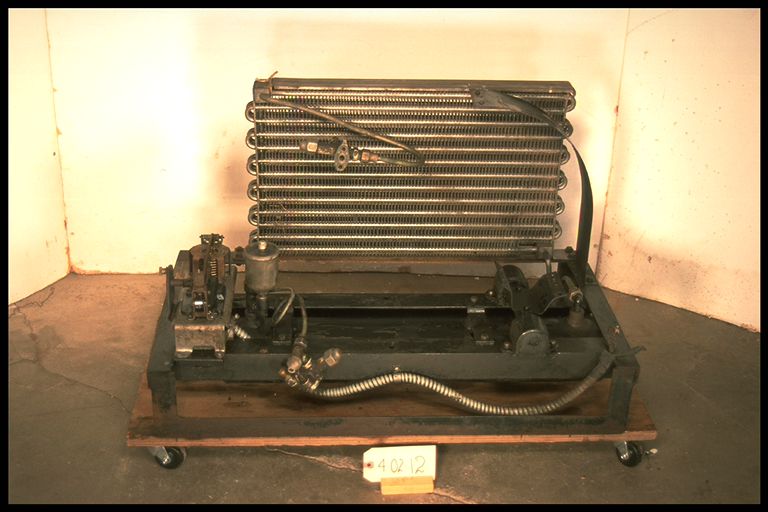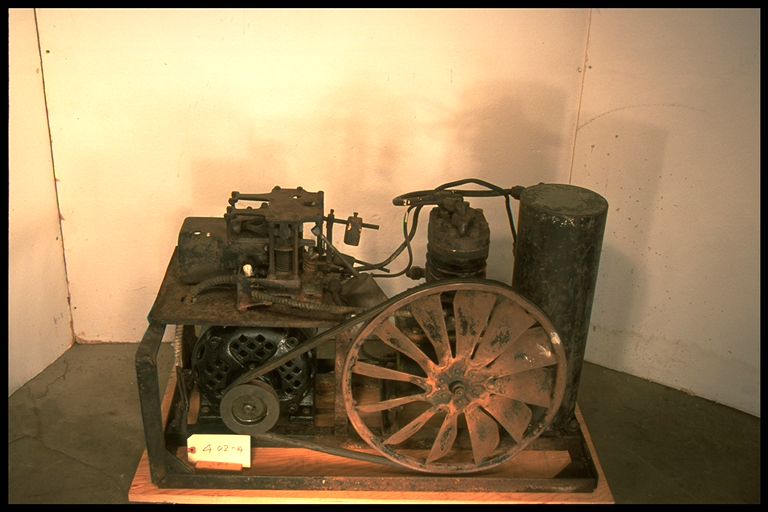4.02-17: Chieftain 1956 Condensing Unit
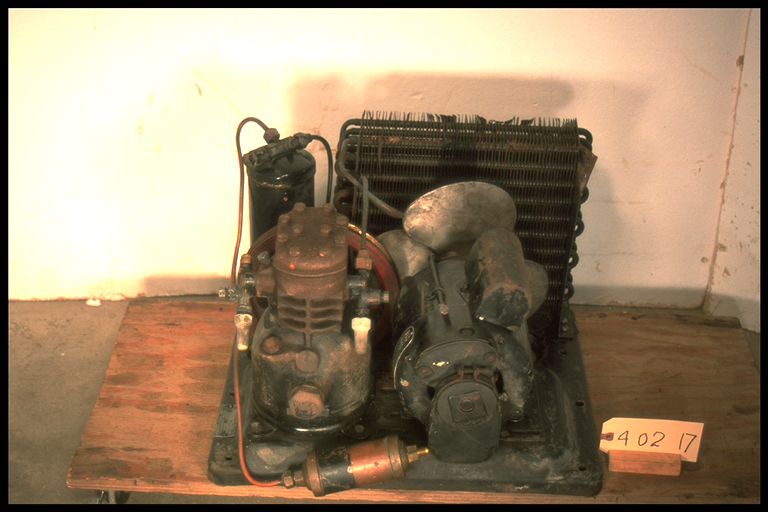
| HHCC Accession No. 2003.055 | HHCC Classification Code: 4.02-17 |
|---|
Description:
In the middle years of the 20th century Tecumseh and their related Chieftain products were leaders in ‘unbranded’ Canadian refrigeration machines appearing in the Canadian market place, as represented here by this 1/3 HP, 2 cylinder, air-cooled, open-system machine. Tucked away, out of public view, in food stores restaurants and similar applications across the nation, such machines would quietly go about contributing to historic changes in the daily lives of Canadians throughout those defining, middle years, Tecumseh Products, 1956.
Group:
4.02 Refrigerating and Air Conditioning Condensing Units - Commercial
Make:
Chieftain
Manufacturer:
Tecumseh Products
Model:
F13U2LE
Serial No.:
4F668
Size:
19x 15x 12’h
Weight:
75 lbs
Circa:
1956
Rating:
Education, and research quality demonstrating the form and structure of mid 20th century, open-system, fractional horsepower, non-branded, commercial refrigeration machines, now flooding the Canadian market.
Patent Date/Number:
Provenance:
From York County (York Region) Ontario, once a rich agricultural hinterlands, attracting early settlement in the last years of the 18th century. Located on the north slopes of the Oak Ridges Moraine, within 20 miles of Toronto, the County would also attract early ex-urban development, to be come a wealthy market place for the emerging household and consumer technologies of the early and mid 20th century.
This artifact was discovered in the 1950’s in the used stock of T. H. Oliver, Refrigeration and Electric Sales and Service, Aurora, Ontario, an early worker in the field of agricultural, industrial and consumer technology.
Type and Design:
Heavy duty 3 pass, copper fin and tube, forced air condenser 2 cylinder compressor, model T4E6-233 Delco 1/3 HP capacitor start, high torque, rubber mounted motor, by McKinnon Industries St Catherines Ont.
Construction:
Material:
Special Features:
Accessories:
Copper shelled refrigerant drier
Capacities:
Performance Characteristics:
Operation:
Control and Regulation:
Targeted Market Segment:
Consumer Acceptance:
Merchandising:
Market Price:
Technological Significance:
Industrial Significance:
The post WWII growth years of the Canadian refrigeration industry saw a proliferation of new manufactures of small, commercial, open-system, refrigeration machines, each bargaining for a share of the growing market. Unlike Kelvinator and Frigidaire, they were essentially ‘unbranded’ machines and readily available through an increasingly wide network of wholesalers and jobbers servicing the Canadian industry.
The proliferation of manufactures, branded and unbranded, vastly increased competitive forces which, along with changes in the technology itself [closed-system, hermetic machines] would, in turn, lead to a re-alignment and restructuring of the field, as part of its new maturity.
The traditional brands of the early years of the century would soon all but vanish. With in 5 years the open-system refrigeration machine would be seriously challenged by a new generation of fractional horsepower hermetic condensing units- a vast and far reaching point of inflection and transition had arrived.
The traditional brands, would themselves be seen as starting to market unbranded, competitive lines. Kelvinator of Canada’s, London Ont. Catalogue of 1948 would market their own machines, by 1951 they had established the Refrigeration Supplies Co. in London [RESCO], which market Tecumseh products, among others
Socio-economic Significance:
Socio-cultural Significance:
By mid 20th century, the astonishing range and diversity of open-system, fractional horsepower, non-branded, commercial refrigeration machines flooding the Canadian market, greatly accelerating the rate of technological diffusion, adoption and the public expectations of life’s benefits to follow.
Donor:
G. Leslie Oliver, The T. H. Oliver HVACR Collection
HHCC Storage Location:
Tracking:
Bibliographic References:
RESC, Refrigeration Supplies co., London Ont. Catalogue No 6, 1951
